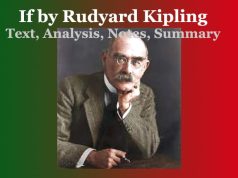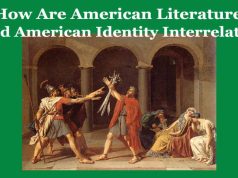Symbolism in Literature
Symbolism in Literature
Introduction:
Symbols in literature are objects, characters, figures, or concepts that carry a deeper, often abstract, meaning beyond their literal interpretation. Writers use symbols to convey complex ideas, themes, or emotions in a more nuanced and layered way. Through the use of symbols, literature becomes a medium for exploring deeper truths and inviting readers to engage in a thoughtful interpretation of the text.
Definition of Symbols:
Symbols are literary devices that represent something beyond their literal meaning. They can be tangible objects, actions, words, or even abstract concepts that acquire additional significance within the context of the story.
Types of Symbols:
Objects as Symbols:
Physical items that take on a symbolic meaning, such as a rose representing love or a key symbolizing hidden knowledge.
Example: In Nathaniel Hawthorne’s “The Scarlet Letter,” the scarlet letter itself becomes a powerful symbol of shame, redemption, and the consequences of societal judgment.*
Characters as Symbols:
Characters that embody abstract qualities or represent larger concepts, functioning as symbols within the narrative.
Example: In George Orwell’s “Animal Farm,” characters like Napoleon and Snowball symbolize political figures and ideologies, reflecting the realities of power and corruption.*
Colors as Symbols:
The use of colors to represent emotions, themes, or ideas, adding a visual layer of symbolism to the narrative.
Example: F. Scott Fitzgerald’s use of the color green in “The Great Gatsby” symbolizes both the unattainable American Dream and Gatsby’s hope for a better future.*
Nature as Symbols:
Natural elements, such as landscapes or weather, serving as symbols to convey emotions or reflect the mood of the narrative.
Example: In Shakespeare’s “Macbeth,” the recurring motif of storms and unnatural occurrences in nature symbolizes the disruption caused by Macbeth’s ambition and moral decay. Symbolism in Literature
Function of Symbols:
Symbols in literature serve various functions, including:
Enhancing Themes:
Symbols reinforce and amplify the central themes of a literary work, providing a deeper layer of meaning for readers to explore.
Conveying Abstract Ideas:
Symbols allow writers to convey complex or abstract concepts in a more accessible and memorable way. Symbolism in Literature
Inviting Interpretation:
The ambiguity of symbols invites readers to engage in interpretation, fostering a deeper connection with the text and stimulating critical thinking.
Example: In William Golding’s “Lord of the Flies,” the conch shell serves as a symbol of civilization and order, but its gradual deterioration also symbolizes the descent into savagery.
Conclusion:
In conclusion, symbols in literature are powerful tools that enable writers to convey profound meanings, themes, and emotions. Through the use of carefully chosen symbols, authors enrich their narratives and invite readers to explore the layers of significance embedded in the text, making literature a rich and thought-provoking experience. 0 0 0. Symbolism in Literature
Symbolism in Literature
You May Like:
- Mood Definition in Literature
- Definitions of Literature Through the Ages
- Birth Development and Function of Literature







